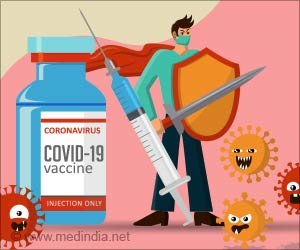Evolving Immunity Landscape of COVID-19 Vaccine

Short-term studies examining limited data points following peak immune responses to SARS-CoV-2 infection revealed that
based on messenger ribonucleic acid (mRNA) technology induced immunity quickly. In addition, the introduction of novel
mutations reduced the efficacy of these vaccinations against symptomatic illness (
).
There is still a dearth of data on the kinetics of antibody responses, particularly durability and longevity, generated by COVID-19 mRNA vaccination following infection, primary immunization, booster vaccination, and breakthrough infections.
PARIS Trial: Analyzing SARS-CoV-2 Immunity Among Mount Sinai Staff
The PARIS (Protection Associated with Rapid Immunity to SARS-CoV-2) trial took place in New York City from April 2020 to April 2023. Over 8,000 biospecimen samples were evaluated in this study, as well as longitudinal data from 501 persons, the majority of whom were Mount Sinai Health System employees.
Advertisement
At the time of recruitment, the average age of the study cohort was 41 years, with 67% of the participants being female. At all study visits, all study participants supplied data, blood, and saliva samples. From week one through week eight, the gap between research visits was two to four weeks. After week eight, the interval was prolonged to four to eight weeks.
Ad hoc visits were also made every week following immunization and other immunological events, such as SARS-CoV-2 infection and re-infection. Antibodies against the SARS-CoV-2 spike (S) glycoprotein were measured using an in-house enzyme-linked immunosorbent test (ELISA).
Vaccination and Immune Responses in the PARIS Study
All 501 PARIS participants received two to six doses of COVID-19 vaccination. 93% of the trial participants received mRNA vaccines, with 342 and 111 receiving two doses of BNT162b2 and mRNA-1273 vaccines, respectively. The remaining 36 subjects were vaccinated against Ad26.COV2.S or AZD1222.
366 of the 465 PARIS participants who had primary vaccination obtained a booster vaccination, with 97 receiving a second booster dose. Only one individual received a fourth booster dose, whereas fifteen study participants received a third booster dose. 14 of the 27 people who received two monovalent boosters chose bivalent booster vaccination.
Plasmablast-derived serum antibodies reached a significant peak shortly after primary immunization; however, this antibody response began to diminish within two weeks. These antibodies represented the 28-34-day half-life of the PARIS model’s short-lived component; however, some antibodies, such as immunoglobulin G1 (IgG1), had a half-life of roughly four weeks.
Over 11 months before the introduction of Omicron, no breakthrough infections were observed in the hybrid immune group. Given the extensive immune evasion abilities and highly infectious characteristics of this variation during the Omicron era, the majority of research subjects had breakthrough infections.
The hybrid immune group was much more protected than previously unprotected people. In fact, among previously unvaccinated patients who developed breakthrough infections after immunization, the breakthrough infection elicited identical antibody responses as a booster dose.
Breakthrough infection did not generate serum antibody responses as strongly as immunization in patients who got two or three booster doses. This could be owing to the participants’ strong pre-existing immunity, which limits viral multiplication; thus, exposure to lower antigen levels elicited a weaker immune response.
The PARIS group tolerated the SARS-CoV-2 mRNA vaccinations well, with approximately 67% having mild to moderate adverse effects. Individuals with hybrid immunity experienced both local and systemic negative effects. This finding is therapeutically significant since reactogenicity may raise vaccine reluctance and lower vaccine uptake.
Deciphering Long-Term COVID-19 Antibody Dynamics
The present study monitored people for up to three years after the pandemic began. This enabled the researchers to conduct a thorough examination of the long-term kinetics of antibody responses following initial and booster immunization, as well as breakthrough infections.
After booster vaccination, antibody fading kinetics were slower; however, antibody titers became more stable with each booster dose. Primary COVID-19 immunization induced antibody titers of over 20,000 area under the curve (AUC); however, total antibody titers peaked at around 10,000 AUC. With repeated SARS-CoV-2 exposures and booster vaccinations, the apparent ceiling effect steadily decreased.
Booster immunization served as a leveler between groups of those who were first infected and those who were initially naive. Specifically, vaccinated people who had previously been infected had greater antibody peak titers than those who were naive before the initial immunization series.
Long-term antibody titers were also affected by age and vaccine type. Infection-naive people, for example, mRNA-1273 generated approximately 1.3-fold greater antibody titers than BNT162b2.
Reference :
- Kinetics and durability of humoral responses to SARS-CoV-2 infection and vaccination – (https:www.medrxiv.org/content/10.1101/2023.08.26.23294679v1.)
Source: Medindia
Source link
#Evolving #Immunity #Landscape #COVID19 #Vaccine



